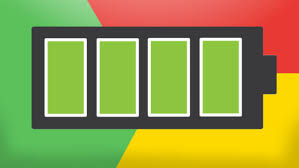A big part of what's won Chrome a lot of converts is how much faster it is over the competition. That speed comes at a price, though: The web browser is notoriously a resource hog (especially if you have a dozen or so tabs open at once) and it dramatically cuts into battery life. As Google tells it, the latest version of the browser will help absolve those sins a bit. New tweaks include restoring only the most frequently used tabs should it detect that your machine is precariously low on resources, and a way of detecting when a page isn't busy with something else and using the free processor cycles to clean up idle memory.
That, coupled with pausing crap like auto-playing Flash ads can free up somewhere around 10 percent of memory usage on average, with a G.mail tab using a whopping 25 percent less memory. There's video below in case you wanted proof. Mountain View says that it'll activate these new features as default over the next few weeks. Something tells me that this probably still won't stop Apple from crowing about how much battery life you can save by using Safari any time soon.
Google Chrome to begin pausing Flash ads around the web on 1st September.
Adobe Flash is notoriously both resource intensive and ubiquitous on the web, which has not helped the open web survive in the consumer shift to mobile devices that have smaller screens and processors. Flash isn't even supported in most mobile environments any more because of its poor performance. Google is as a result working hard to eliminate Flash content from its ad network and create a better web browsing experience. Today it announced September 1st is when it will begin pausing many of the Flash ads seen around the web for users of its Chrome web browser.
Fortunately for Google, it’s able to convert most of the Flash ads uploaded to its Ad Words advertiser network to the less intensive HTML 5 automatically. The company provides a section on its support site where advertisers can go to see what Flash ads are eligible for this conversion, and it has even made a step-by-step tool for converting ads which can’t be automatically converted or haven’t already been uploaded to Google’s servers.
Google first announced this shift back in June, and while the company has its own mobile operating system with a massive amount of native apps in the form of Android, it’s still a big proponent of the web. Perhaps because that’s where it was born, but really because the web isn't closed off like mobile operating systems, and the underlying hypertext language of the web allows the company to easily scrape and index it for its Search business, among other things. The company introduced a setting to its Chrome browser in March which enables this disabling of Flash plugin content. Chrome for Android and iOS doesn't support it at all.


